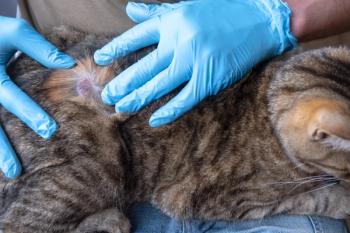
American Humane Association investigates why people don't own pets
Surprising barriers include lasting grief over loss of a previous pet-and a frank dislike of cats.
There were the expected responses—"pets cost too much money," "I don't have time," "I'm allergic to cats"—but it was the unexpected answers concerning pet ownership that the American Humane Association took special note of in its "Keeping Pets in Homes Retention Study." The most surprising finding? Nearly 20 percent of prior pet owners surveyed said they didn't acquire a new dog or cat because they were still grieving the loss of a previous pet.
American Humane has launched the three-part study as part of its efforts to better understand pet ownership—or lack thereof—and as a result reduce the number of adoptable pets euthanized in shelters each year. The first phase of the study aimed to uncover people's motivations for owning (or not owning) a dog or cat and for keeping pets in the home (or relinquishing them). Phase I, "Reasons for Not Owning a Dog or Cat," was released in August.
Researchers interviewed 1,500 non-pet owners and previous pet owners via an online survey. The results confirmed barriers to ownership such as cost and a perceived lack of time, but also acknowledged that lasting grief over the loss of a pet is a real deterrent. "Clearly, the human-animal bond in strong and our profession needs to help owners celebrate a prior pet—allowing them to take the next step to future ownership," says Patricia Olson, DVM, chief veterinary advisor for the American Humane Association. She hopes veterinarians can discuss the benefits of owning another animal with those clients when the time is right.
While love for a previous pet was a deterrent to ownership for some, the opposite was true for others. Some respondents cited a frank dislike of companion animals—especially cats, as more than a third of respondents said they simply disliked them. Among previous dog owners, 45 percent would consider obtaining another pet, while only 34 percent of previous cat owners would. Of those who had never owned a dog or cat, 25 percent said they would "probably or definitely" consider a dog, while only 10 percent would consider a cat. "We need to consider new strategies for cats," Olson says. "Younger people are interested in cat ownership." In fact, the data shows that a single person between the ages of 18 and 34 is most likely to consider owning a cat.
Other research shows that cats are still the most popular pet. According to the American Veterinary Medical Association's 2012 U.S. Pet Demographic Study, at the end of 2011 Americans owned 74.1 million cats, compared with 69.9 million dogs.
"Informing veterinary practices is still needed," says Jane Brunt, DVM, executive director of the CATalyst Council. A CATalyst study has suggested that as more veterinary practices adopt cat-friendly strategies, pet owners will respond more positively. This, ideally, will result in better pet retention, increased preventive care and more cat adoptions—which American Humane hopes will come from rescue organizations or shelters.
In its study, American Humane found that only 22 percent of dogs and 18 percent of cats were obtained through a shelter or rescue organization. However, around half of both previous pet owners and non-pet owners would "most likely" obtain their next pet from a shelter or rescue organization. The study also revealed that the longer a previous owner went without owning a new pet, the less likely he or she was to want one, and older respondents were less likely than younger to want to own another pet.
A significant percentage of respondents (53 percent of previous dog owners and 49 percent previous of cat owners) said their last pet had lived in the household for more than 10 years. Only 10 percent of previous dog owners and 12 percent of previous cat owners reported that the pet had been given away or sold to a friend or family member. The leading reason for placing a pet elsewhere was that the pet was not allowed at their place of residence (29 percent and 21 percent for dogs and cats, respectively), followed by allergies (2 percent/11 percent), behavior issues (10 percent/8 percent), time (10 percent/3 percent) and death or divorce (10 percent/8 percent).
According to the study results, a person most likely to consider obtaining a dog is someone who's single, younger and living in the Western United States and who has owned a dog within the past five years. The most likely person to obtain a cat is a young single who lives alone, has an income of $50,000 to $74,999 and has owned a cat less than five years ago.
The researchers concluded that to lower barriers to ownership, pet advocates need to address negative attitudes toward cats, support younger future cat owners, understand grief as a barrier and provide support for those adopting from shelters and those with housing restrictions or financial limitations. "The veterinary profession is concerned about reported decreases in dog and cat ownership in the U.S.," Olson says. "With this research, we are addressing barriers to pet ownership and reasons for relinquishment. Pets need good homes and we want them to have good homes forever. Both pieces are incredibly important." To view complete results from Phase I of the study, go to
Newsletter
From exam room tips to practice management insights, get trusted veterinary news delivered straight to your inbox—subscribe to dvm360.





